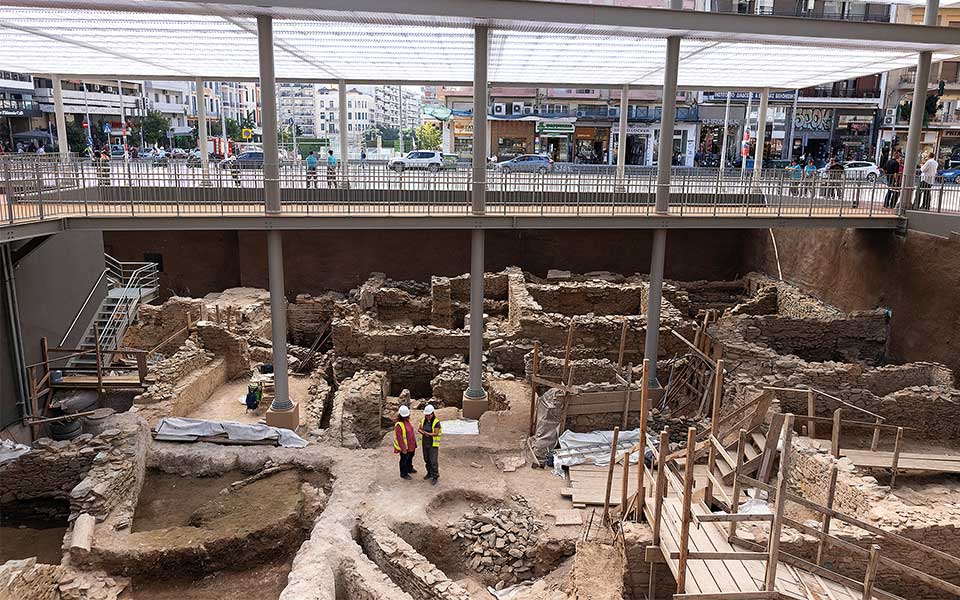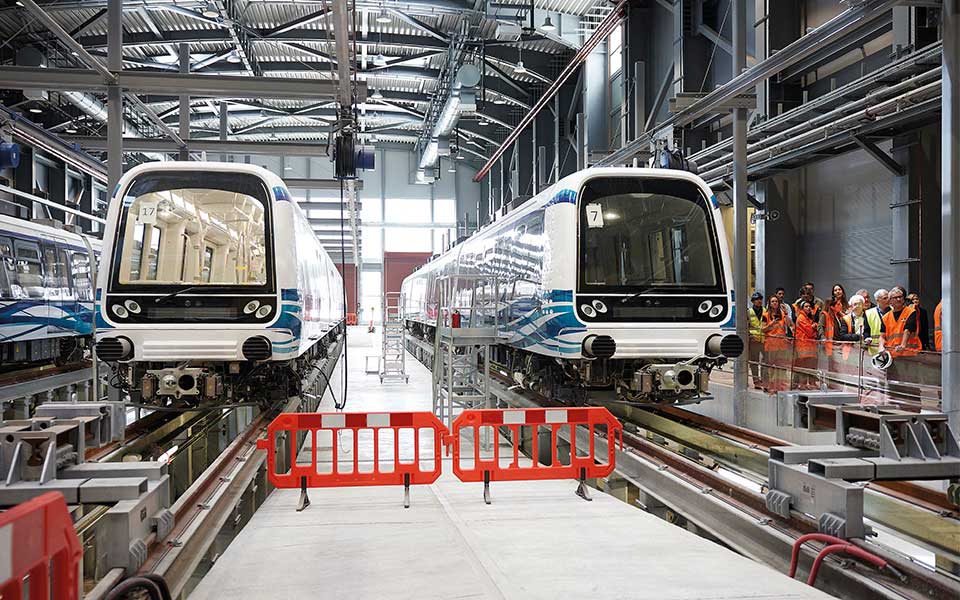Thessaloniki has waited almost three many years for this second. The metro, town’s latest crown jewel, has triggered the individuals of Thessaloniki a lot hardship through the years: site visitors and financial challenges, division over the historic artifacts found throughout excavations, and political clashes. Nevertheless, all that was forgotten when the ribbon was lastly lower on the inauguration ceremony.
Thessaloniki’s subway (a “sibling” of the Milan and Copenhagen metros attributable to their shared technological strategy) is now a actuality! It extends for 9.6 kilometers beneath town, starting on the Neos Sidirodromikos Stathmos within the west and ending at Nea Elvetia within the east. The 13 stations span almost your entire metropolis middle, providing simple entry to Thessaloniki’s major squares and main sights.
The brand new subway system options Greece’s first driverless trains (though there are attendants on board), and the stations have automated platform door programs, making it simpler to air-condition them and thus preserve vitality. One other first for Greece is that Thessaloniki’s metro is the nation’s first public transportation system to be operated by a personal firm, the Thema Consortium. Skilled vacationers can even discover that the stations are deeper underground (starting from -14 to -31 meters) in comparison with these in Athens, a selection made to keep away from disturbing town’s archaeological layers throughout development. Let’s not overlook that this metropolis has been constantly inhabited for over 2,000 years.

© Achilleas Chiras/AFP/VISUALHELLAS.GR
The truth is, work on the metro led to nice archaeological discoveries, however that was additionally why development took so lengthy. Regardless that the tunnels had been constructed at ample depth, constructing the 13 stations and the requisite air flow shafts required in depth archaeological excavations – the most important ever such enterprise carried out within the metropolis, spanning roughly 20,000 sq. meters. It’s estimated that greater than 300,000 artifacts had been unearthed through the work, which started in 2006 however, slightly than being accomplished in 2012 as deliberate, was as an alternative accomplished in late 2024.
These archaeological digs distinguish the Thessaloniki metro as each a contemporary transit system and a vacationer attraction. Antiquities had been found at a number of of the stations, together with two within the historic middle (Venizelou and Aghia Sofia), two outdoors town partitions to the west (Dimokratias and Neos Sidirodromikos Stathmos), and three within the east (Sindrivani, Panepistimio and Fleming stations,) in addition to on the Pylea depot.

© Konstantinos Tsakalidis,
Historical past Uncovered
The discoveries on the Venizelou and Aghia Sofia stations, simply 800 meters aside, replicate town’s city improvement over time, centered on the principle street that has traversed town from its founding and thru its numerous phases: the Hellenistic gravel street and, through the Roman period and Late Antiquity, the Decumanus Maximus and the Byzantine Avenue or Center Avenue, at this time’s Egnatia Avenue. Surrounding these streets had been the densely constructed blocks that fashioned the neighborhoods of town’s Byzantine market. Retailers and workshops flanked the road, exhibiting issues on the market. A wealth of small artifacts and jewellery, together with breastplate crosses, glass and bronze bracelets, and bronze – and infrequently silver – rings, attest to the world’s long-standing industrial character, notably within the silver and goldsmithing trades.
In response to the Ministry of Tradition, the finds on the Venizelou Station comprehensively doc town’s successive constructing phases from Hellenistic instances. The excavations revealed beforehand unknown archaeological layers, as Roman-era relics had been unearthed throughout work on the Late Antiquity strata. Regardless that the Venizelou Station covers only one,260 sq. meters, the archaeological dig spanned a minimum of 3,500 sq. meters. It revealed town’s founding part underneath Cassander, which adopted a Hippodamian grid format with solely minor deviations from the principle avenue community.

© Konstantinos Tsakalidis
The destiny of the antiquities found at Venizelou Station divided scientists and native residents. A big section of the scientific group advocated for the in-situ preservation of the artifacts. Successive governments took totally different views, with the latest deciding to take away the antiquities to make approach for the station’s improvement. They had been subsequently reinstalled on the similar location (however at a distinct depth) inside the station. The result’s a big indoor archaeological web site of nice curiosity that’s accessible to guests.
In lots of stations, passengers can view a small portion of the antiquities discovered at every web site on show. The Ministry of Tradition has introduced plans to construct an underground archaeological museum within the metropolis middle, devoted to artifacts found through the development of the metro. Thessaloniki’s metro will shortly witness its first enlargement: the primary extension to the east, towards Kalamaria, can be added within the fall of 2025, with 4.8 kilometers of tunnels and 5 extra stations.
The environmental influence can also be necessary, for the reason that Kalamaria enlargement is predicted to serve over 300,000 passengers per day as soon as accomplished. It’s predicted that, with the system absolutely operational, there can be round 57,000 fewer non-public vehicles on the roads every day, decreasing CO2 emissions by 212 tons per day.



Recent Comments